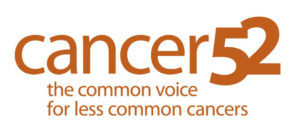Sore hands and feet on TKIs
Martin’s Help Sheet: SORE HANDS AND FEET ON TKIs
Introduction
Many patients with secondary kidney cancer are initially put on drugs called Tyrosine Kinase Inhibitors (TKIs) such as sunitinib (Sutent) or pazobanib (Votrient). Whilst these drugs are generally very effective, unfortunately most patients suffer some side effects to a greater or lesser degree, and one of the more common ones is hand- foot syndrome or palmer-plantar Erythrodysesthesia (PPE). Information about other common side effects of TKIs and how to deal with them can be found on the Sutent website.
What Is Hand-Foot Syndrome?
Hand-foot syndrome (HFS) is a side effect of TKIs. It primarily affects the palms of the hands and soles of the feet, where skin cells normally have a high rate of regeneration.


What Causes It?
According to Oncolink, no one knows for sure what causes HFS, but there are a few theories. The most widely accepted theory is that the small blood vessels in the palms and/or soles break due to use, pressure, or increased temperature, causing an inflammatory reaction and possibly releasing the drug into the area.
Symptoms of Hand-Foot Syndrome
Common symptoms of hand-foot syndrome include: Tingling or numbness, burning, redness, swelling and tenderness. Whilst uncomfortable, these may be tolerable, but in severe cases the skin becomes dry and flaky and may blister and peel or develop sores or ulcers, which can have a major impact on quality of life, affecting the ability to use hands to do tasks and can in extreme cases make it very painful for people to walk on the affected areas.
It is also worth being aware that prolonged use of TKIs can cause fingerprint loss, although rare. The peeling and blistering of the skin over time may cause the fingerprints to be erased. This gained much media attention in 2009 when a Singapore man was detained at U.S. Customs for not having fingerprints. His condition was related to taking Xeloda (capecitabine) for three years.
Measures to Control or Prevent HFS
There are some measures you can take to lessen the risk of HFS and control it if you get it, such as:
- Avoid overheating skin
 Avoid overheating skin with hot water. You will find your skin particularly sensitive to it whilst on TKIs. If you have a hot shower yourskin will probably come out in red blotches due to the heightened sensitivity of the skin. It normally disappears once the skin cools, but it is a sign that your skin doesn’t like to heat. Try turning the heat down a little if you can tolerate it.
Avoid overheating skin with hot water. You will find your skin particularly sensitive to it whilst on TKIs. If you have a hot shower yourskin will probably come out in red blotches due to the heightened sensitivity of the skin. It normally disappears once the skin cools, but it is a sign that your skin doesn’t like to heat. Try turning the heat down a little if you can tolerate it. - Avoid direct friction on the skin
Anything that involves applying friction to the hands or feet is likely to result in stripping skin off the affected areas. It is definitely recommended to wear gloves for gardening or DIY and fitness activities which involve lifting or gripping hard. The first time you strip the fingers or thumbs you’ll wish you wore gloves! Prevention is definitely better than cure in this respect.
It’s best not walk in bare feet as this is likely to result in damage to the skin. Natural fibre socks or soft slippers are the best way to protect your feet. Ideally wear comfortable shoes with cushioned soles. One of our patients said:
“…try getting a pair of Havaianas flip flops to wear indoors – the best thing is they cushion and they are the only things that helped me walk at times. No other flip flops worked for me”
Another patient said:
“Bought myself a few pairs of sketchers go walk with the yellow GOGA foam insoles, feel good especially with the sore feet side effects, being on sutent (4th cycle nearly done) like walking on air, and easy on the feet.”
- Consider not wearing rings
To limit friction, it may be preferable to avoid wearing rings on your fingers, although this a personal choice and perhaps something to be aware of and stop wearing rings if it looks like they are causing skin problems.
- Stay well hydrated
Dehydration is also a cause of dry skin, so it is important to keep well hydrated by drinking lots of water.
- High dose vitamin B6
Oncologists often recommend short-term use of 50 to 150 mg of vitamin B6 (commonly known as Pyridoxine), which is considerably higher than the daily recommendation. However, a 2015 meta-analysis (a review of studies published to date) failed to find that vitamin B6 actually helped with hand-foot syndrome, but it may be worth considering and discussing with your oncologist.
- Treating the skin
This is perhaps the most important preventative measure you can take. The most common treatment is to apply an emollient cream. These are specialised moisturisers that soothe dry, cracked, and irritated skin thereby helping to maintain the skin’s softness, smoothness and elasticity. These should be applied several times a day. Here’s what our patients recommended:
- Udder cream
“My husband was advised to use Moo Cream which in effect is udder cream as above. He doesn’t use anything else. He was given initial tube by someone at Addenbrookes but now buys it from Amazon. Must contain Urea though, that’s very important”
“Battles Udder Cream, available from amazon or if you check on google it will tell you if there is a stockist near you. Available in farm supply shops and horsey shops.”
“Do the udder balm massage eat least three times a day, and last thing at night then get some plain 100% cotton socks and let them get impregnated with the cream and even sleep in them. the trick is to start early before you have any problems and keep applying.”
“We got it from the local horse tack and fodder shop. Two types bright pink or white. The pink stained but was a better consistency. The white was stiffer but thicker.”
- Diprobase
“I get Diprobase from my oncologist with my other drugs. You need to apply it several times a day. It tends to be greasy for a while afterwards which was a problem for me as I used crutches, then I read their website and it said can be used as a soap. So now that’s what I do. Every time I wash my hands I’m creaming up, and by constantly applying it, it works a treat.”
“I get Diprobase prescribed by my GP – works better than anything for my sunitinib feet!”
“I got some Diprobase yesterday and started to use it. It is good and works fairly quickly to relieve the pain when standing on your feet. It is paraffin based and is quite thick and clear but leaves a coating on the skin.. They gave me four tubes and one of them will be with me all the time.”
- Aveeno cream
“Try aveeno cream from the chemist it’s the only thing that works for me.”
- Heels Genius Soap and Glory Cream
“Got it from boots in a pink tube. I use it every day and i sleep in socks find my feet go really dry at night and get sore otherwise.”
- Flexitol
“I use Flexitol. It has high urea content. Good for diabetics too.”
- Henna
“Henna is also good for some people. I also massage a blend of essential oils into them twice a day.”
“When my feet did get sore henna worked a treat.”
“I found that henna helped.”
- Repairing damaged areas
The following were recommended for treating damaged areas:
- Sudocrem
“When the skin on my thumbs strips off, I apply Sudocrem and plasters and it does repair the damage within a couple of days.”
“I didn’t want to put the udder cream on sore areas so put sudocrem on instead! Guess what? Tonight the sores are nearly gone and the pain is minuscule! Not saying it will work on everyone, but maybe its worth a try! Just going to pirouette into bed now!”
- Scholl Cracked Heel Repair Cream
“Until this cycle I’ve never blistered, but this cycle either I’m turning into a lizard or my skin has gone exceptionally dry. I can literally peel the skin off !! Anyhow I’ve discovered Scholl Cracked Heel Repair Cream which works wonders.”
- Salt water
“I found the sea water helped on holiday even though i wore sea shoes so since we’ve been back I’ve been bathing my feet in sea salt flakes then creaming too been lots better.”
Please let us know if you have any other remedies or preparations which you have found useful and which we can add to this sheet to help others. Email us here.
Thanks to all the KCSN members for their tips and information and especially to Martin Price for his patience and willingness to collate this information to help and support others.
Please help other patients:
Please keep us updated with useful information that will help other cancer patients. You can email us with your tips so we can regularly add to this resource.
Thanks to all the KCSN members for their input, and especially to Martin for his patience and willingness to collate this information to help and support others.
Written February 2017
Download a pdf of this help sheet here: Sore hands and feet on TKIs


